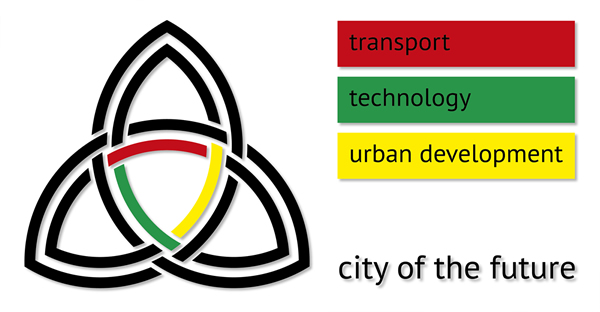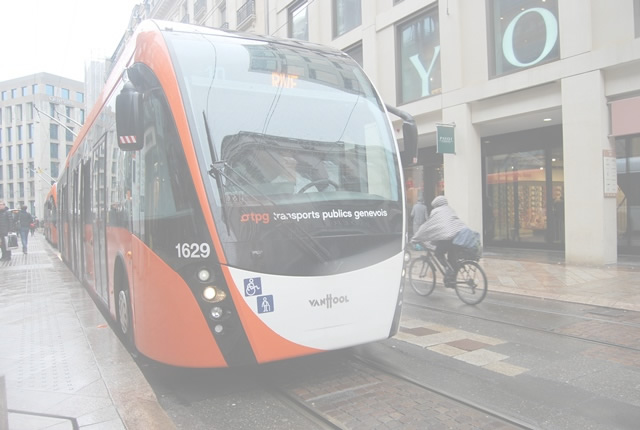Smart city
What it is and how it works
 Ing. Jakub Slavík from Consulting Services, a professional consultant, has the best answer to the question of what a smart city is: he has defined the term of smart city in the Czech environment and explains its meaning.
Ing. Jakub Slavík from Consulting Services, a professional consultant, has the best answer to the question of what a smart city is: he has defined the term of smart city in the Czech environment and explains its meaning.
The exhibition project by Green Pear Tip – CITY OF THE FUTURE PRAGUE 2019 is based on the professional, matter-of-fact and comprehensible explanation of our partner and the topic of the smart city will mingle through many fields as a coloured thread for the entire period of three years of our unique project.
Everyone regardless of their age should understand the topics of the smart city, whether you are an elementary school pupil or a university professor. The smart city is an unlimited topic that truly concerns each of us. The smart city is a sort of a manual and has a great chance to find ways of restoring our cities.
At Proelektrotechniky.cz, Jakub Slavík’s website, you will find information about “smart city” projects in the world, such as Barcelona in Spain, Yokohama in Japan or the “smart town” Fujisawa in the suburbs of Tokyo.
When you compare information from the projects, you will see that the concept of the smart city is applied all over the world, but it is interpreted in different ways. There is not a single, accurate and generally accepted definition.
Thus we will focus on the basic indicators of a smart city that are common for most projects and that also take into account the official methodology for the implementation of the smart city concept in the Czech Republic, which is currently being prepared, also in cooperation with the operator of our portal, Proelektrotechniky.cz.
The concept of the smart city strives to maximally utilise modern technologies, namely the information technology, to influence the quality of life in a particular city in a way that creates synergic effects between various branches (transport, logistics, safety, power engineering, building administration etc.) with regard to the energy demand and the quality of life of people in the city. The emphasis is laid on “hard” and “soft” aspects of managing life in the city.
The smart city can be viewed at four levels:
- Organisation and planning for which information technologies obtain and process required data,
- Community life in which electronic information systems help the city management communicate with its inhabitants and get information from them as well as feedback about their management,
- Infrastructure, namely power engineering, transport, municipal services and buildings and their “intelligent” management using information and communication technologies,
- The final quality of life and attractiveness of the city as the end goal of the implementation of the smart city concept is subjective in many aspects and thus difficult to measure.
The smart city concept does not only concern the used technologies, but it also strives to help the overall economic growth of the cities and the quality of their environment through their efficient operation, which also includes positive subjective perceptions of the life in the city by its inhabitants. The application of modern technologies in this relation is not an end in itself – it is a technical resource for reaching economic goals.
From the technical and organisational point of view, the concept of the smart city includes the following elements:
- a) Intelligent mobility, which mainly includes:
- City transport control and regulation (including cycling and leisure transport) using traffic telematics, administrative measures as well as planned development of public transport infrastructure – the European Sustainable Mobility Plan methodology is an important tool,
- Promoting user-friendly public transport as a full alternative to individual transport (remember that an electric car creates about the same volume of externalities as a Diesel bus when converted to the transport capacity unit),
- Promoting the incorporation of ecologically clean drives, both in public and individual transport (such as development of electric public transportation, charging infrastructure for electric cars or electric car sharing systems).
- b) Intelligent power engineering and services, which mainly includes:
- Promoting the use of renewable energy resources or combined production of electricity and heat and their safe integration into the city energetic network,
- Intelligent control of energy consumption, including energetic building management and promoting their energetically economical solutions,
- Intelligent control of city services to efficient use of energy and natural resources – mainly energetically economical street lighting, efficient waste management and efficient water management.
- c) Information and communication technologies that support both the infrastructure of the city life and the city management process. In addition to the aforementioned traffic telematics, this also includes:
- Systems of intelligent management of street lighting and other city services,
- System of intelligent management of energy and water consumption,
- Monitoring and security systems for protection of property and citizens in the city, including fire signalization and environmental monitoring,
- Monitoring and diagnostic systems for early detection of defects in the city infrastructure,
- Intelligent payment systems in city services (such as public transport or parking),
- Information systems for protection and monitoring of seriously ill and handicapped citizens, etc.
As you can see, the operation of a smart city blends together with other “intelligent” concepts, particularly with smart grids and intelligent buildings.
The aforementioned list of aspects of a smart city is quite extensive and it is rarely applied in full. The official methodology mentioned above, prepared within the TA CR BETA research programme, is trying to set a system of indicators that would measure their fulfilment in the Czech environment and thus served for a presentation of a city as “intelligent” and for a feedback to the city management.
The smart city concept primarily focuses on large cities with respect to the necessity to solve their problems. However, it can also be applied to small towns as well as wider territorial units, such as “smart regions”.
Even though it is the management of the particular city that formally implements the smart city project, its factual driving force often includes industrial businesses in the field of electrical engineering, power engineering and informatics. The implementation of this concept is an important marketing opportunity, as well as a valuable source for further improvement of their products and services. Thus, smart city projects often start as partnerships between the city and the industry.
There are national and European sources available for co-financing of the development of a smart city and its individual components in the Czech Republic, available mainly through operational programmes managed by the Czech Ministry for Regional Development, Czech Ministry for the Environment, or the Czech Ministry of Transportation.
Ing. Jakub Slavík, MBA – Consulting Services












